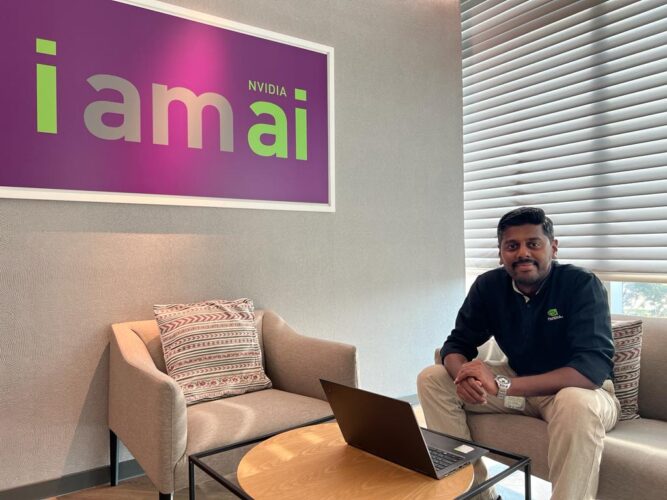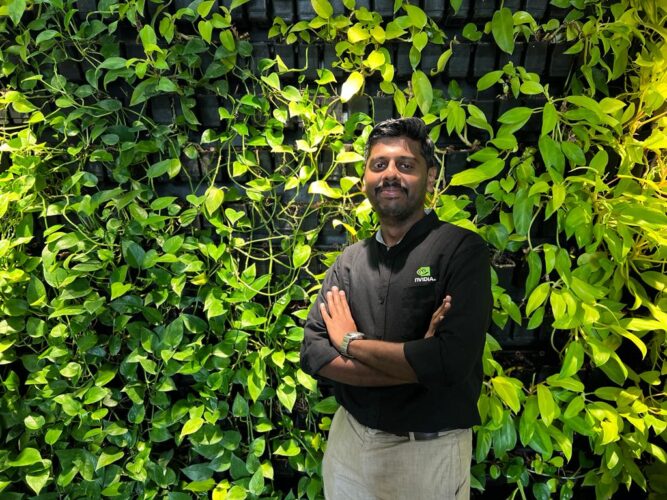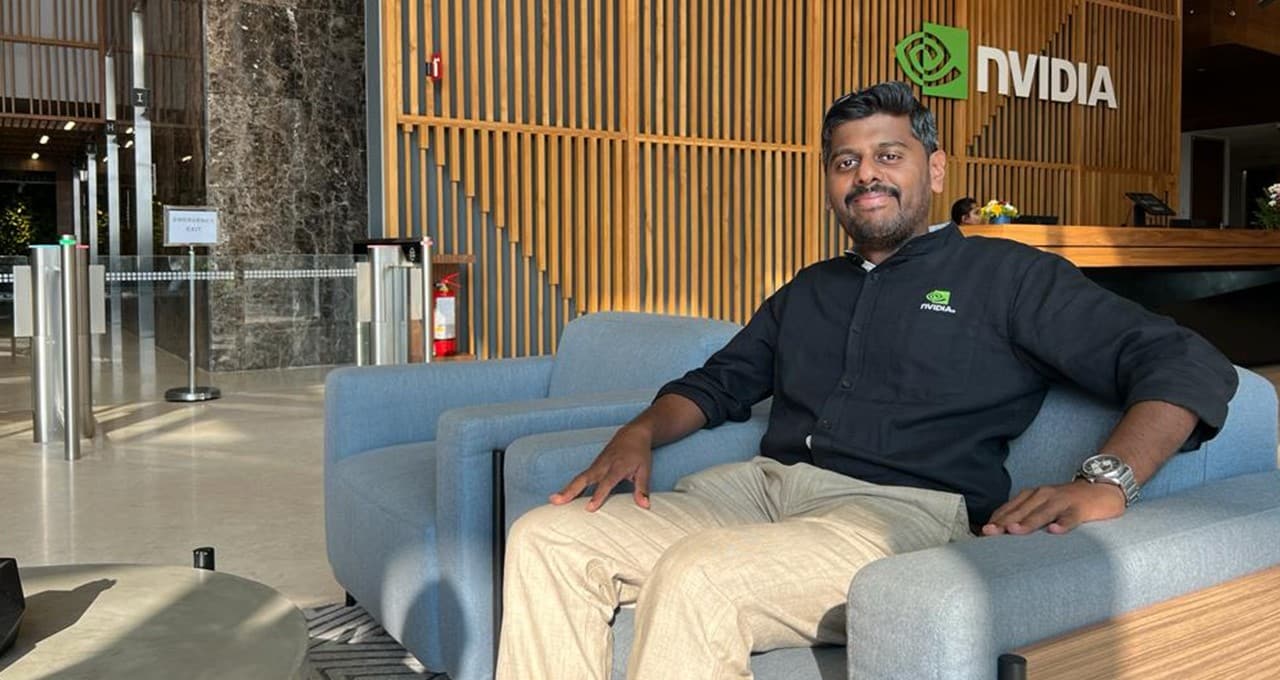At age 20, Manikandan Chandrasekaran was at an impasse — choosing between two careers that involved chips: either cooking them or engineering them.
After contemplating starting a career as a chef, Chandrasekaran learned about NVIDIA through his university placement program and joined as a new grad. Seventeen years later, he’s a senior manager of hardware engineering with the GPU hardware memory subsystem group based in Bangalore.
“The stars aligned the day I accepted the offer from NVIDIA, and now I’m doing my life’s work,” Chandrasekaran said. “I still get to make chips — just a different kind.”

What led you to NVIDIA?
- I knew I wanted to do something in the field of semiconductors, a lesser-known industry in India at the time. When I first heard of NVIDIA through a campus placement in 2006, the company was mostly recognized for its graphics cards and chipsets. NVIDIA had a cool vibe and was all the buzz on campus — plus, the company had a high bar in hiring and a competitive package. I couldn’t resist the opportunity.
What’s the biggest challenge you’ve faced?
- My first silicon bug in a new module during my first year. It wasn’t an easy time for me — there was a massive sense of guilt and too many things running through my mind on why the bug was missed.
- However, the “one team” culture at NVIDIA was just incredible. My manager and team members were working round the clock to pull data and figure out workarounds and tradeoffs. Different teams chipped in and shared their experience with resolving similar problems. The support from the whole group — from isolating the issue to closure — was quite remarkable.
- Our CEO, Jensen Huang, has a well-known saying: “No one fails alone at NVIDIA.” I saw it play out live. Many years and bugs later, I admire that in our culture — we celebrate failures as opportunities to learn.
Is there an accomplishment you’re most proud of?
- I’m very proud of our teamwork on NVIDIA Hopper architecture-based GPUs, which took critical project execution in the midst of the pandemic lockdown. The vast majority of the Hopper project cycle happened while people were adapting to a new way of working virtually, managing the requirements of home and work simultaneously. Despite it being a very challenging time, folks stepped up and kept going all the way. The amount of coordination needed to get the first version of this complex chip to production during the pandemic was immense.
- What is more satisfying is that the NVIDIA H100 Tensor Core GPU is used to accelerate drug discovery, so hopefully, we can avoid such pandemics in the future. It’s an electronic engineer’s contribution to the world of medicine.

What are you most excited about in your field of work?
- In the last decade, we’ve seen rapid growth in the hardware industry with the advent of mobile and the speed of the internet. NVIDIA evolved from being a hardware company to a computing platform company during this time.
- As the company keeps defining standards, we keep raising the bar and identifying new problems that we want to solve efficiently.
- I’m excited about the opportunity to refine and redefine hardware to align with computing platforms. This includes tackling different types of problems that can benefit from the potential of hardware.
What do you have going on outside NVIDIA?
- I dive into the world of books. Some of my favorite authors are Ayn Rand, Paulo Coelho and Anton Chekhov. But I enjoy Roald Dahl and Julia Donaldson with the same enthusiasm.
- I like playing board games with my daughter.
Learn more about NVIDIA life, culture and careers.
